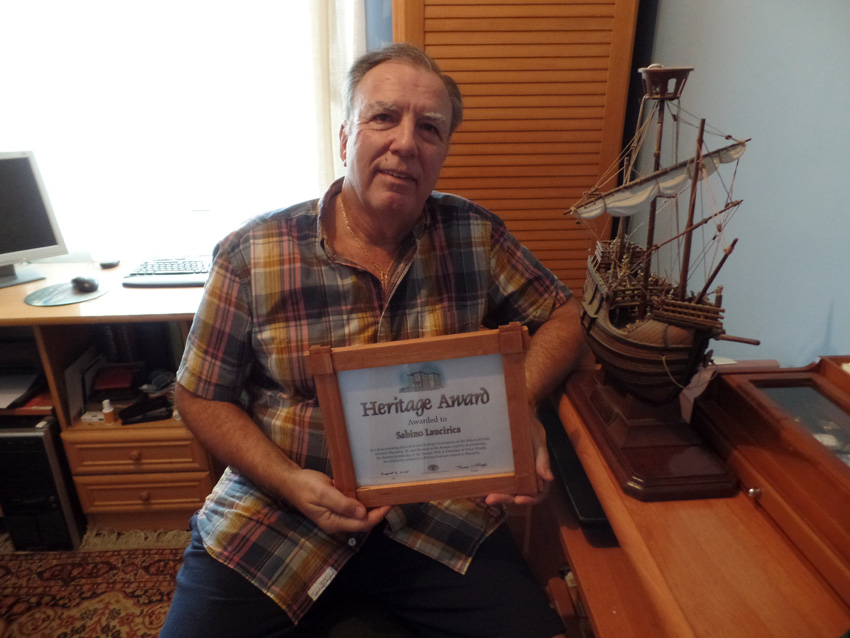Sabino Laucirica, Basque researcher from Plentzia, was recently awarded the Heritage Awards in the town of Placentia in Canada for his work on the dissemination and implementation of historic heritage of the capital of Newfoundland during the times of Basque whalers. “The heritage of Placentia is really our heritage, it was left by Basques,” he says.
Plentzia, Bizkaia. Merchant Marine Captain, Sabino Laucirica, found a place called Placentia one day on a map of Canada and became intrigued. He began to research the relationship between his hometown Plentzia and this place in Newfoundland. It turns out that it was Basque whalers who named this enclave in the XVI century for its similar bay in Plentzia. “The first written mention of the name appeared on a map of Kallard in 1547,” Laucirica told EusalKultura.com.
That Discovery was the beginning of a passion that he has been working on over the last several years, and that was recognized this summer with receiving the Heritage Award from Placentia last August for his efforts to discover the historical heritage of this Canadian town. “This award recognizes the defense of the heritage of the city of Placentia and the capital of Newfoundland between 1662 and 1713 and has never been awarded to a non Canadian,” Laucirica explains.
Initial Reluctance
With his Heritage Award plaque in his house in Plentzia, Laucirica remembers that at first his research wasn’t as well received in Placentia. “It is because after the expulsion of the French and their commercial allies, the Basques, the English established in the area and repopulated it with Irish. They weren’t initially interested in this part of their history.” But Laucirica didn’t give up and sent them documentation with his findings in Basque archives and letting them know about the rich Basque heritage in Placentia.
With the Discovery of the San Juan ship that sunk in Red Bay, research and archeologic excavations were the focus in this area, and Placentia fell into oblivion. “They didn’t do excavations because people in the area were not motivated to do so. My goals were to make them understand and believe that what they have is important,” Laucirica said. He also warned that since the area is low, the area is also at risk of rising seas.
Horrible Conditions
As a sailor, Laucirica assures that the conditions of the Atlantic trip and the stay in Newfoundland for the Basque sailors were “horrible.” “I sailed for many years and finding yourself in the middle of the ocean at night, makes you take stock of your life….Imagine this in a ship that is 25 meters long with more than 100 crew members. Many died during the trip and also in Newfoundland. One winter was so hard that 500 whalers died. Every year, nearly 2,000 left to give you an idea of how big it was,” he says.
If the conditions were so horrible, why did the Basque whalers go there? “They put themselves at such risk because it was a very beneficial industry. A barrel of whale oil could reach nearly 5,000 Euros. When the San Juan sunk in Red Bay, for example, it had 900 barrels aboard,” he explains.
Life and Death in Newfoundland
Over the coming months the Basque Government will publish a book on Laucirica’s research entitled, Vida y muerte de los balleneros vascos en Terranova (Life and Death of Basque Whalers in Newfoundland). Laucirica will present it in October and is also hoping to be at the Durango Book Fair.






 Send to a friend
Send to a friend Add comment
Add comment








